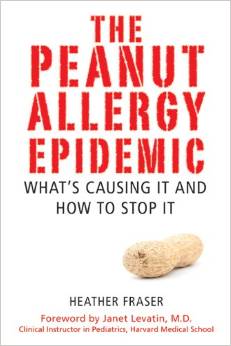Why Is That?
Ms. Fraser quickly points out that peanut allergy used to be a concern only for Western countries – why is that? She indicates that there was a sudden rise in the UK, U.S., Canada and Australia around 1990, and it worsened through the 2000’s – why is that? The odds of a Western child developing a peanut allergy were 1 in 75 as of 2008 – why is that?
She also writes that the person most likely to develop a peanut allergy is a male born after about 1990 in said Western countries whose “ability to detoxify had been challenged by environmental factors” – why is that?
She finds it difficult to accept that “hundreds of thousands of children had become allergic to this one food in the space of just twenty years by ingestion alone.” You can’t blame it on genetics, as the overall rate would stay the same. Logically, there would have to be something in the environment (food, toxins, etc.) that’s triggering this rise.
Standard Theories Not Sufficient
Ms. Fraser writes about different theories and why they alone are not sufficient to describe this epidemic. These theories are:
- The broken-skin hypothesis
- The ingestion hypothesis
- The toxin hypothesis
- The helminth (worm) hypothesis
So What’s Causing It?
With the skill of the historian that she is, Ms. Fraser points out several key facts that point to our medical policy as the cause of this alarming rise in peanut allergy, which is paralleled by alarming rises in autism, ADHD, asthma and other chronic health conditions. You will need to read the book to discover what those key facts are.
Still Looking for Answers?
Visit the Epidemic Answers Provider Directory to find a practitioner near you.
